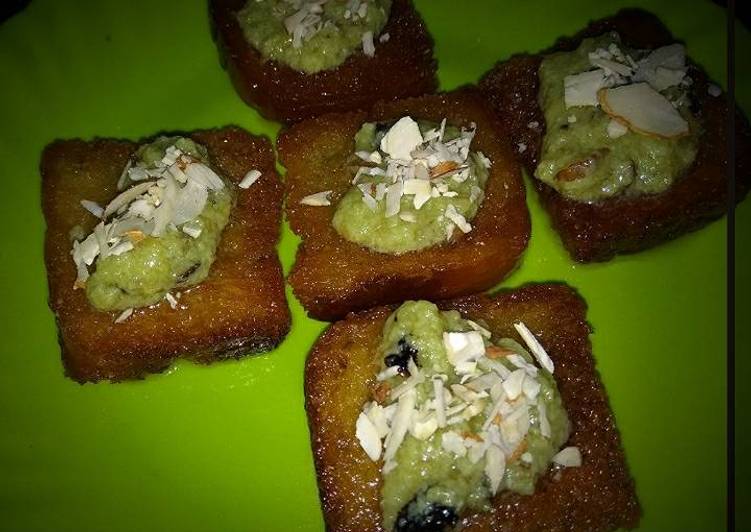Shahi tukda double Ka meetha. It is also known as Double ka meetha ( Indian bread pudding). Double ka meetha, also known as Shahi Tukra, is a bread pudding Indian sweet of fried bread slices soaked in hot milk with spices, including saffron and cardamom. Double ka meetha is a dessert of Hyderabad, Telangana.

Ingredients of Shahi tukda double Ka meetha
- Prepare 4 of Bread slices.
- Prepare 2 cup of Sugar syrup.
- You need 1 cup of Custard milk.
- Prepare 3 tbsp of Oil.
- It's 2 tbsp of Chopped dry fruits.
How to make Custard Shahi Tukda shahi tukda Easy & Quick Method on www.lotusfoodgallery.com. This dish was a favorite of Hyderabad royal family. Hyderabadi Double ka meetha, easy rich and a delicious recipe for sweet dish from Hyderabadi cuisine.
Shahi tukda double Ka meetha instructions
- Step for shahi tukda:.
- Remove sides of bread slices and cut each slice in to square..
- Heat oil in a pan and deep fry the bread pieces for about few minutes.or until golden brown and crisp..
- Drain and absorbent pepper heat another small pan with sugar and water.boil it for about 2-3 min.sugar syrup is ready.and keep it on side..
- Dip the fried bread pieces in to sugar syrup and take out immediately..
- Step for rabri cream:.
- In a deep nonstick pan add the custard milk bring this to a boil.once boiled,add sugar and keep cooking on medium,stirring in intervals until reduce to half and thick stir occasionally in between to prevent and mix well..
- Turn off heat and let rabri cream (thickend milk mixture)cool at room temperature..
- Add dry fruits mix properly..
- Pour prepared rabri cream over it..
- Garnish with dry fruits.shahi tukda double Ka meetha is ready..
A delicious Indian bread pudding in which fried bread is soaked in thick saffron flavoured milk. It is specially prepared in Hyderabad on the occasion of Eid and is a popular Ramadan Recipe. Shahi tukda or double Ka meetha is popular dessert in Urdu Hyderabadi cuisine. It's made compulsorily in the Eid and Ramadan feast. As the name suggests "shahi" means royal and it is believed that it descended from the royal Mughlai cuisine.